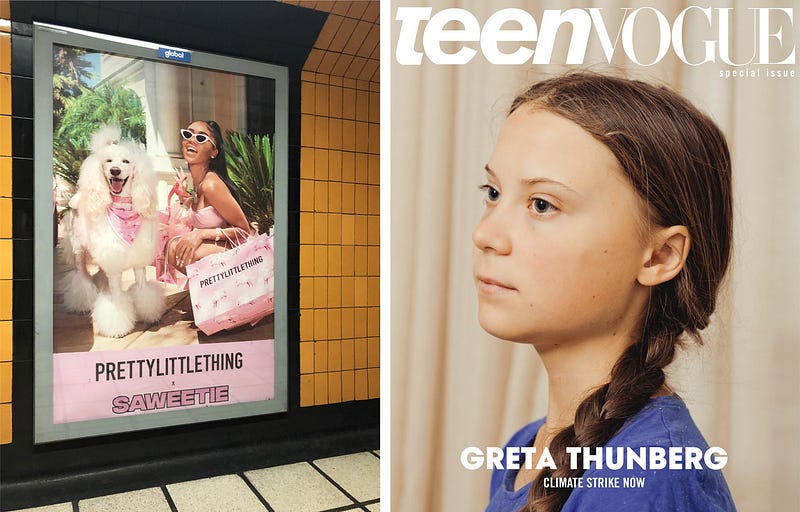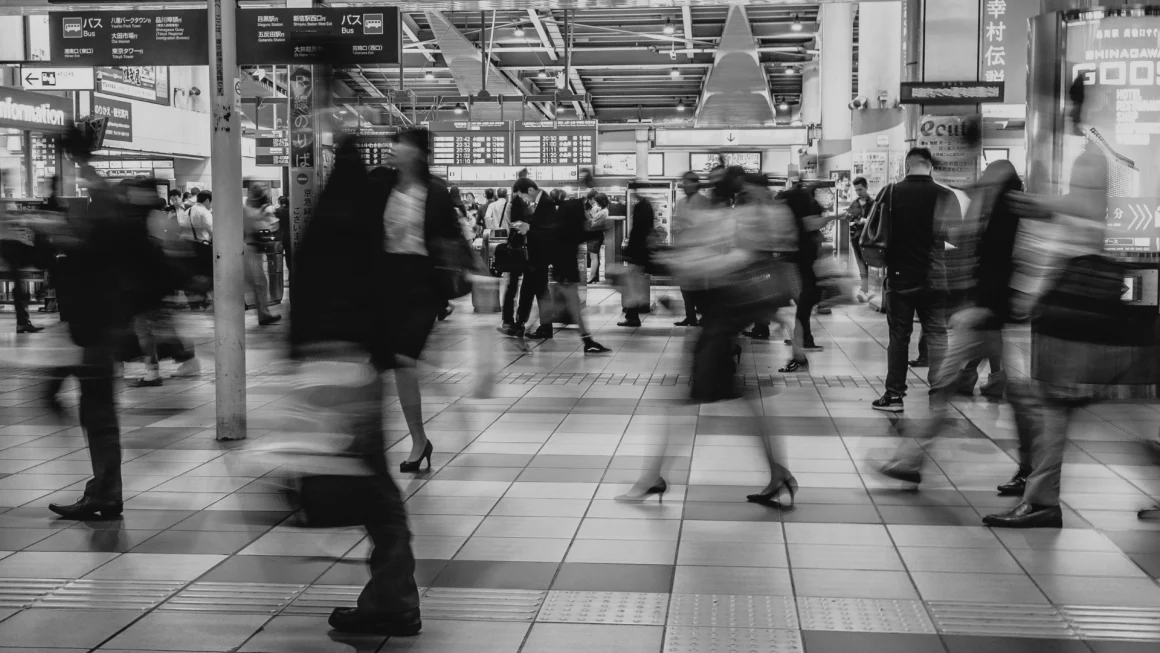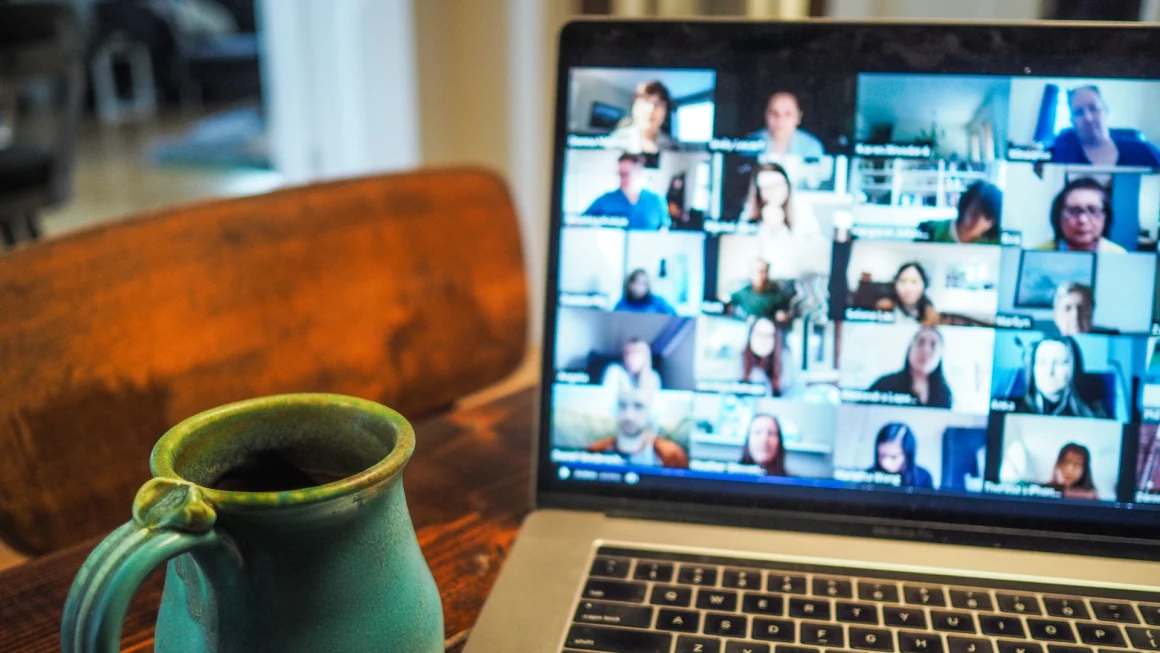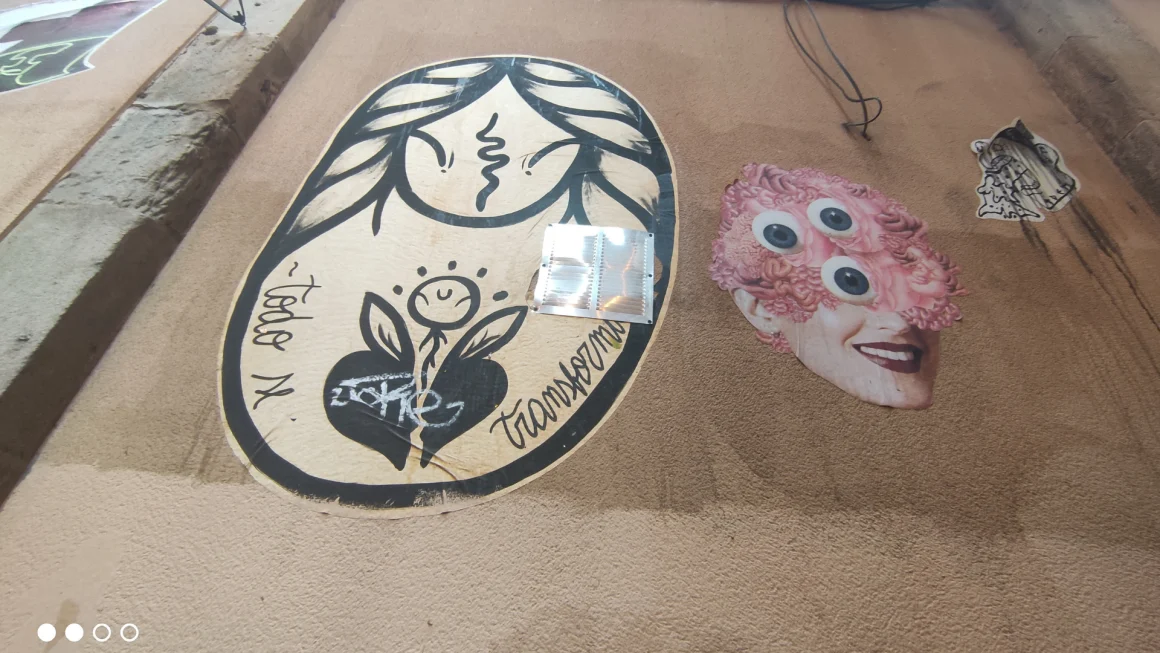A story by Enzo Dal Verme
Last September I was in London (remember? In the pre-pandemic world we could travel!) and I noticed an advertisement repeated along the tube station walls. Pinkish posters depicted a shopaholic girl carrying lots of shopping bags. A sheared white poodle and a flashy pink car where part of the scene in front of what seemed to be the entrance of a Miami or Los Angeles villa. The testimonial? Saweetie, the rapper that sings:
“Rich nigga, eight-figure, that’s my type…
Bitch please (Bitch), Lamborghini keys”
Every element in that message was finely tuned: from her expression to the fake nails to the overall mood. I knew that there was a target consumer that responded to those values, those stimuli. The visual impact was very strong, strong enough to knock me out of my bland-acceptance mode. Why had the brand chosen to go that way?
I found the campaign anachronistic, out of step with the times. The feel was too detached from what was going on in the world. Back then (just a few months ago!), the Extinction Rebellion movement and Greta Thunberg were dominating the news. Vogue Teen had just dedicated its cover to Greta and attention to the environment was palpable everywhere. The image of a fashion victim carrying all those shoppers seemed out of place, especially in London, where the Extinction Rebellion movement started.

During the following months, Greta was featured on fashion covers — GQ, ID, … — and Time magazine nominated her Person Of The Year. No matter how many people criticize Greta, she has indisputably injected new impetus into the movement away from reckless consumerism and toward a more sustainable future. People have started flying less and questioning the consequences of their purchases in general. Fashion was no exception. Why? “The fashion industry emits more carbon than international flights and maritime shipping combined” read an October Business Insider headline. And in December, in a long article full of examples on sustainable fashion, Vogue stated: “An estimated 50 million tons of clothing is discarded every year, and most of it will not biodegrade in a landfill. […] We’re phasing out single-use plastic and paper bags from our lives, and we should think about our clothes the same way.”
Many other articles on the subject have been published in mainstream magazines. So what is happening? Fashion magazines used to give little importance to news and data on sustainability, but in the last months we have been witnessing a shift. Actually it’s been long in coming. An event that compelled media attention to the subject was the tragedy in Bangladesh on April 24, 2013. The Rana Plaza building, a huge garment factory, collapsed, becoming the fourth largest industrial disaster in history: 1,138 people dead, 2,500 injured.
That’s when Fashion Revolution was born and their campaign for systemic change in the fashion industry started. Consumers were suddenly asked to answer questions like: Have you ever wondered who made your clothes, how much they’re paid and what their lives are like? This brought new scrutiny and pressure on trendy brands. The fashion industry, undisputed realm of the superfluous, normally aloof to environmental and social problems, was being asked to contemplate the implications and consequences of its own choices.
“Brands and retailers are still not taking enough responsibility for the pay and working conditions in their factories,” states the Fashion Revolution website, “the environmental impacts of the materials they use or how the products they make affect the health of people, animals and our living planet.”
Fast forward: the Coronavirus pandemic arrived and obliged us to do what we would have probably never done on our own — take a break from our furious rhythm. All sectors were affected: tourism, luxury, entertainment, and, of course, fashion. The forced halt of all activities has led, among other things, to a reduction in pollution. The air has become cleaner, the sky bluer, our spaces more peaceful.
We have known for years that our way of living is not sustainable and needs to change. In the ’80s and ’90s, French emeritus professor of economics Serge Latouche was already urging us to embrace frugality. Mind you, frugality is not misery. In fact, he talks about “frugal abundance”. He got some attention, but the majority haven’t shown much interest in his proposal for “happy degrowth”.
I don’t know if Giorgio Armani ever read any of Serge Latouche’s books, but he recently showed the intention to go roughly in that direction. “It makes no sense for one of my jackets or suits to live in the shop for three weeks before becoming obsolete, replaced by new goods that are not too different,” he wrote in his open letter to WWD on April 3rd, “This crisis is an opportunity to slow down and realign everything; to define a more meaningful landscape.”
King Giorgio is not alone. Fashion trend forecaster Li Edelkoorf stated at about the same time:
“we can start up from scratch and build new systems where social and common aspects outweigh the ego, where morals and values overrule shareholder profits, and where collaboration and cooperation prevail to give more people equal opportunities.”
Let this sink in. Ideas that just a few years ago seemed crazy or “alternative” are now entering the mainstream. Are we really at the brink of an epochal shift toward a more sustainable lifestyle?
Many brands now claim their sustainability bona fides. Whether they are really making a difference or just riding a trend is yet to be determined. Take Vogue Italia. Their January 2020 issue didn’t require any photoshoot. “There is a significant environmental impact associated with publishing a fashion magazine”, declared editor-in-chief Emanuele Farneti. Instead of photographs, he decided to publish illustrations “conceived by artists who have created without travelling, shipping clothes or polluting in any way […] the challenge was to prove that, as an exception, it is possible to show clothes without photographing them”. Lovely. But… apart from the fact that they were back to photoshoots the following month, what is Vogue’s overall aim? Photographs or illustrations, the magazine endorses an industry that “emits more carbon than international flights and maritime shipping combined”.
Of course, they couldn’t drop all the clients who were unable to prove certain sustainability standards. That would have been a real statement, but they would have been left without any advertisers. So they opted for something less drastic but with a high media potential. Their photoshoot-free issue was received as a slightly controversial statement. Many liked it, photographers felt indirectly accused, and others found the operation a little forced. Regardless of some criticism, Vogue achieved its purpose: make people talk about the January issue.
Was that really making a difference for the environment? A little bit, which is better than nothing. And I found their decision to start using “only compostable plastic to wrap the magazine” to be significant. Big changes are made of small steps. Well done. But at the same time, it seems we need more radical changes now.
I decided to write this article after seeing Gucci’s recent campaign #sodeertome. As they put it, it’s “an ode to retrieved innocence, a return to the infant world, a call for a real engagement with nature and, with that, with life”. The models in the photos are surrounded by cute animals right out of a children’s fairy tale.
Nature is beautiful in these images, but looking at the campaign I felt there was something off-tune. At first, I didn’t quite get what it was. It could have been the fakeness of all those fluffy animals. Too pretty? No, that wasn’t it.
And then it hit me: it was Gucci!
Those glittered boots and all the hyper-styled models were totally inappropriate. That is not “real engagement with nature” as they claim, it is covering it with unnecessary glamour that is supposed to add value to those who can afford it. Do we still need this?
I appreciate the fact that Gucci is bringing attention to the subject of nature, but their approach seems outdated. Even if they have announced a donation to The Lion’s Share Fund to protect endangered species and their natural habitats, they are still proposing the old “buy my product and you’ll be part of this fabulous and exclusive world, you’ll be happy”.
Quoting Li Edelkoorf again, “It seems we are massively entering a quarantine of consumption where we will learn how to be happy just with a simple dress, rediscovering old favourites we own, reading a forgotten book and cooking up a storm to make life beautiful. The impact of the virus will be cultural and crucial to building an alternative and profoundly different world.”
Gucci is just being Gucci, after all. We can’t expect a change in the blink of an eye. Just like with other fashion brands.
And us, as individuals?
Since the lockdown started, we can’t count on our appearance to impress and enhance our restricted social interactions. A bad-hair-day is now the norm, masks cover our faces, and videocalls replace meetings in person. Most forms of visual seduction seem so last-year now!
As a consequence, many of us are experiencing the quality of our limited interactions as more relevant than how amazing we look. The capacity to be gentle, empathic, and cooperative, for instance, acquires more importance. It’s more noticeable and appreciated.
This is not necessarily an either/or situation. It is certainly possible to be kind while wearing fine clothes. What I mean is that, whether we like it or not, a change is taking place. If we can normally use our clothes as a subliminal statement, now that language is harder to use.
How is this going to play out over the coming months and years? Many say we will come out of this as better people. We are learning to value substance more than appearance. We are becoming more aware of the consequences of our choices and, therefore, becoming more responsible consumers too.
“Bullshit”, says my friend Pierpaolo Pitacco, fashion art director, “it would be really nice and desirable, but things will not change. After the pandemic we’ll go back to business as usual. Haven’t you seen how in China people flocked back to stores the minute the lockdown ended? Luis Vuitton sales have skyrocket and Hermès made $2.7 million on the reopening day in one store alone in Canton!”
Pierpaolo is right, I am a bit of an idealist. And yet, that’s not the all story. On The Business Of Fashion I read that, in China, “Instead of emerging from the coronavirus epidemic and returning to the shopping habits […] many young people are offloading possessions and embracing a new-found ethic for hard times: less is more”. In other words, many Gen-Z and Millenial shoppers are turning to a simpler life.
Fashion expert Imrad Amed comments that now “the customer mindset has completely shifted, and so people. Maybe they don’t wanna try on garments in a store, maybe they don’t even wanna buy any new clothes, they are focused on other things, maybe they lost their job maybe they think fashion is super frivolous and it’s not important right now, there are all sort of things that are going in to consumers mind”.
Now… will post-pandemic fashion go more in the direction of Latouche’s “frugal abundance”? That would mean comfortable and long-lasting garments that are not destined to become outdated after a season. Quality clothes at a fair price, not sewn by children in some sweatshop, but produced in a sustainable way with sustainable materials. That would mean keeping the pleasure of wearing something nice while avoiding fast-fashion, planned obsolescence, and the democratization of luxury.
Not everyone might want that. Some will still miss compulsive shopping and clothes as a way to define themselves and seek external approval. Fashion can indeed be used to compensate for our insecurities and here we are digging into a can of worms. Our profoundly narcissistic society has taught us to stoke our self-esteem in funny ways. The current situation is shaking us deeply and evoking a variety of responses. It’s up to each and every one of us, now, to decide which values we want to prioritize. Our choices are already shaping the paradigms to come.
This is a story of the Futurists Club
by Science of the Time
Written by: Enzo Dal Verme

About the author:
Currently based in Milan, Enzo has been working in the photographic and information industry for over 20 years. His celebrity portraits and reportage pics have been published in Vanity Fair, l’Uomo Vogue, The Times, Glamour, GQ, Marie Claire, Grazia, Amica, Madame Figarò, Elle and many other magazines.
He currently shares his time between photography and strategic communication consultancy. At times the two things overlap and… a new adventure is on the way (stay tuned!).In general, he prefers to focus his attention on solutions rather than problems and on making that solution really appealing and sexy. Brutally practical idealist, he has a predilection for using mainstream media with a subversive twist 🙂
Now very willing to work on sustainable and cruelty-free projects. Consumers’ money needs to go sustain ethical businesses and stop funding unethical companies.
He loves tofu.





